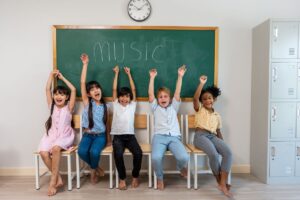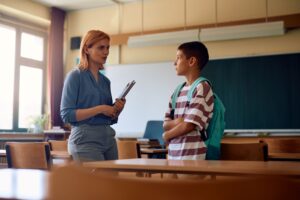The impact that educators have on students is often immeasurable. Sometimes, it can be the instantaneous “light bulb” moment; sometimes, it is simply planting a seed and waiting years to reap what has been sown. And it is an easier task to define what they are learning through the curriculum, though often revised, and the assessment, which “proves” what they have learned. It is the typical standardized version of learning.
But what else is taught to students throughout their careers in different classrooms? No two educators are alike in their instruction capabilities and no matter how much collaboration one might have with peers, all teachers instruct differently. So, what happens in those undefined moments?
And thus begins the hidden curriculum journey. But what is the hidden curriculum? These are the unspoken lessons often taught indirectly to students, such as social learning concepts, work ethics, cultural learning, and even perceptions and values, both positive and negative.
Unwritten Rules and Expectations
Whether teachers want to admit it or not, they are role models to students. And how they model those roles provides some of the most valuable life lessons students can inherit. Expectations for each classroom can highlight the significance of how to act and interact in society. Building respect may show students the appropriate ways to handle those moments in which they might struggle. Providing conflict resolution strategies will allow them to experience both confidence and resiliency to which they can later apply those situations in their adult lives.
How an educator promotes positive character traits in unspoken and untaught ways will provide a substantial impact. Promoting the ability to work hard to earn high grades builds a work ethic. Living specific character traits, which companies often try to box and sell, such as responsibility, justice, courage, and integrity, shows they do not have always to be taught but simply modeled.
Ask any students which teachers they respect the most, and they won’t hesitate to share an answer. Then ask them to identify why and when they were specifically taught about the answers they share. Most of them won’t be able to comment because they were part of the expectations of that hidden and impactful curriculum.
Unconscious Biases and Stereotypes
Now, unfortunately, the challenge lies in providing affirmative lessons, but that only sometimes occurs, whether it is because of implicit bias built into society or individual opinions that subconsciously influence students.
For example, as a former high school English instructor, most of the canon novels I taught in classes showed the societal structure for boys and girls, and it has not been valued as equal in history. But these roles have been integrated into their psyche since they were little children, ranging from the age-old colors of blue for boys and pink for girls to women being prepped as a possession in marriages rather than equal partners. These stereotypes are exactly the types of molds that teachers have to break, sometimes through discussions but more often through modeling.
In the current educational landscape, equity versus equality and critical race theory versus critically responsive teaching are two extremely divisive theories that play a major role in how students respond to each other and how they view society. And so, by understanding how important the hidden curriculum is in education, teachers can begin to break down these polarizing ideas.
Unlearning Harmful Messages
In order to break down this type of messaging, inclusion of more examples of differing cultures must be included in lesson planning but, more importantly, how teachers present this content must be in a way that presents all-inclusiveness, meaning that equality should exist for all people and that human experiences should be shared and celebrated. It is a retraining of this thinking that must occur to break down the negative messages in culture and society.
Socialization and Identity Formation
Student responses to these cultural stereotypes are significant in their identity formation. While most elementary students accept most of their peers, middle school and high school highlight the separation based on their own thoughts and attitudes toward the world. Having teachers who can help guide them toward how to respond positively while they investigate their own identities is of utmost importance.
Middle school students are constantly in competition to fit in with other students as they learn about their bodies and the hormonal changes. They become leaders and/or followers. They are attempting to determine their own self-worth, and teachers are imperative to this growth by promoting confidence in all students.
Educators don’t teach how mistakes are made or how to rectify them. Yet, every response they elicit shows that the hidden curriculum components will determine how students see themselves. If teachers are forgiving and willing to help the students work through mistakes, it can build confidence and show them how to navigate mistakes throughout their lifetimes.
Understanding how to work in groups is just as important as knowing how one learns independently. So, while teachers might prepare lessons that organize students in collaborative and controlled groups, it is the way those students interact and how the teacher helps them through success and failures that will model true collaboration and compromise. This is a vital skill that will enhance their abilities to be successful in their careers.
These relevant lessons become solidified as students transition into high school. Therefore, it is especially important to continue to build compassion and understanding toward others, as they maneuver through their experiences.
Promoting Equity and Inclusion
There is no doubt that what educators say has a powerful relevance for students. But what they don’t say speaks volumes. In order to promote equity, they must counteract what has been instilled in people for centuries. The hidden curriculum is an opportunity to take advantage of eliminating these issues. A deconstruction of those biases, stereotypes, and inequalities is integral in illustrating to our students that we must all participate in life, so why not accept our differences so we all have faith that our purposes on this planet are equal?
Educators never stop learning; check out our available graduate degree programs to hone your skills and promote lifelong learning and academic excellence.




